Introduction
Zongzi, a traditional Chinese rice dumpling wrapped in bamboo or reed leaves, is a beloved culinary treasure enjoyed during festivals like Dragon Boat Festival and beyond. These pyramid-shaped delights are often filled with ingredients like glutinous rice, pork, mung beans, or red bean paste, offering a harmonious blend of textures and flavors. For convenience, many households and food enthusiasts opt for frozen zongzi, which can be stored for extended periods and cooked as needed. However, a common question arises: How long should frozen zongzi be steamed to achieve the ideal balance of softness, stickiness, and aromatic infusion? This article delves into the science and art of steaming frozen zongzi, providing detailed insights, practical tips, and troubleshooting advice to ensure your rice dumplings emerge from the steamer flawlessly every time.
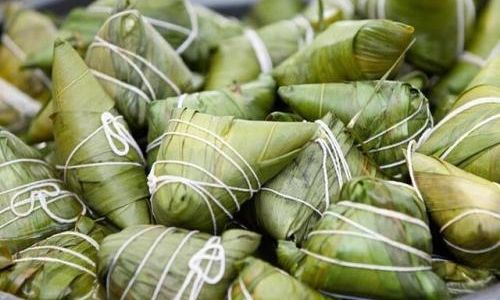
Understanding the Steaming Process
Steaming is a gentle cooking method that uses hot vapor to cook food evenly while retaining moisture, flavor, and nutrients. For frozen zongzi, this method is particularly effective because it thaws and cooks the dumplings simultaneously, preventing the rice from becoming mushy or the fillings from drying out. The key to success lies in maintaining a consistent temperature and allowing adequate time for heat to penetrate the dense layers of glutinous rice and fillings.
Factors Influencing Steaming Time
The duration required to steam frozen zongzi varies based on several factors:
- Size and Thickness: Larger zongzi or those with thicker layers of rice and fillings demand longer steaming times. Commercial varieties often come in standardized sizes, but homemade ones may differ.
- Filling Density: Zongzi stuffed with dense ingredients like meat or chestnuts may require additional time compared to lighter fillings such as red bean paste.
- Freezing Method: Zongzi frozen rapidly at ultra-low temperatures retain moisture better but may need slightly longer cooking.
- Altitude: At higher elevations, water boils at lower temperatures, potentially extending steaming time.
- Steamer Efficiency: The material and design of your steamer (bamboo, stainless steel, or electric) affect heat distribution.
Step-by-Step Guide to Steaming Frozen Zongzi
Preparation
- Thawing (Optional): While steaming directly from frozen is possible, thawing zongzi in the refrigerator for 8–12 hours can reduce cooking time by 5–10 minutes. Avoid thawing at room temperature to prevent bacterial growth.
- Steamer Setup: Fill a wok or large pot with 2–3 inches of water. Place a steamer basket or rack above the water, ensuring it does not touch the liquid. Line the basket with parchment paper or cabbage leaves to prevent sticking.
Arranging the Zongzi
- Space the dumplings evenly in the steamer, leaving at least 1 inch between them to allow steam circulation. Overcrowding may lead to uneven cooking.
Steaming Time
- Standard Size (100–150 grams): 25–35 minutes on medium-high heat.
- Large Size (200+ grams): 40–50 minutes.
- From Frozen: Add 5–10 minutes to the above durations.
Monitoring Doneness
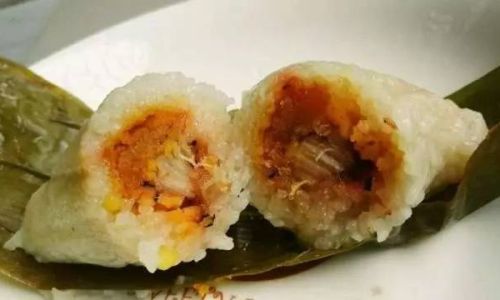
- Visual Cues: The leaves should darken slightly, and the rice should appear translucent.
- Texture Test: Carefully unwrap one zongzi (use oven mitts!) to check if the rice is tender and sticky.
- Thermometer Check: Insert an instant-read thermometer into the center; it should register at least 165°F (74°C) for meat-filled varieties.
Resting Period
- Remove the zongzi from the steamer and let them rest for 5 minutes before serving. This allows the rice to firm up slightly, enhancing texture.
Tips for Perfectly Steamed Zongzi
- Water Level Management: Refill the steamer with boiling water if needed during cooking to maintain steam production. Cold water can disrupt the cooking process.
- Leaf Quality: Fresh, pliable leaves conduct heat better than brittle ones. If using dried leaves, rehydrate them before wrapping.
- Flavor Enhancement: Add a teaspoon of vinegar to the steaming water to neutralize any off-odors from the leaves.
- Uniformity: Ensure all zongzi are similarly sized and shaped for consistent cooking.
- Pressure Cooker Hack: For a quicker method, use a pressure cooker on high for 15–20 minutes (plus natural release time).
Common Mistakes and How to Avoid Them
-
Undercooking:
- Symptoms: Gummy rice, cold centers.
- Fix: Extend steaming time in 5-minute increments.
-
Overcooking:
- Symptoms: Mushy rice, disintegrated leaves.
- Fix: Monitor closely and use a timer.
-
Uneven Cooking:
- Symptoms: Some sections are raw; others are overdone.
- Fix: Arrange zongzi in a single layer and rotate them halfway through.
-
Soggy Leaves:
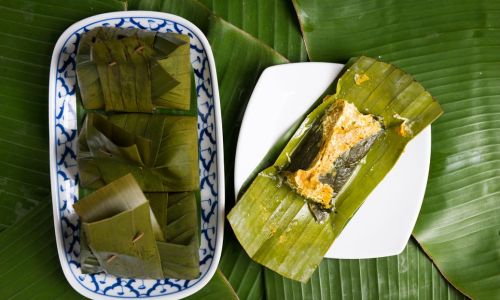
- Symptoms: Wet, limp wrappers.
- Fix: Ensure the steamer lid fits snugly to trap steam, and avoid overfilling the pot.
Alternative Cooking Methods
While steaming is traditional, other methods can yield satisfactory results:
-
Boiling:
- Submerge frozen zongzi in boiling water for 30–45 minutes. Drain thoroughly before serving.
- Pros: Faster than steaming.
- Cons: May leach flavor into the water.
-
Microwaving:
- Wrap each zongzi in a damp paper towel and microwave on high for 3–5 minutes.
- Pros: Quick and convenient.
- Cons: Risk of uneven heating; textural compromise.
-
Oven Baking:
- Preheat to 350°F (175°C), wrap zongzi in foil, and bake for 40–50 minutes.
- Pros: Crispy exterior.
- Cons: Labor-intensive; less common for zongzi.
Serving Suggestions and Pairings
Steamed zongzi shine when paired with complementary flavors and textures:
- Dipping Sauces: Soy sauce mixed with chili oil, vinegar, or minced garlic.
- Sides: Pickled vegetables, cucumber salad, or congee.
- Beverages: Jasmine tea, chrysanthemum tea, or light beer.
For a modern twist, serve zongzi with avocado slices, poached eggs, or a drizzle of truffle oil.
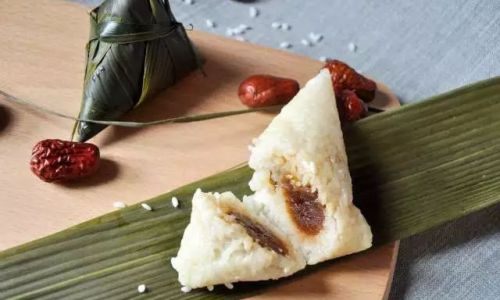
Safety and Storage Tips
- Reheating Leftovers: Refrigerate cooked zongzi within 2 hours. Reheat via steaming (10–15 minutes) or microwaving (1–2 minutes).
- Freezing Uncooked Zongzi: Wrap tightly in plastic, then foil, and freeze for up to 3 months.
- Avoid Cross-Contamination: Use separate utensils for raw and cooked zongzi.
Cultural Significance and Variations
Zongzi’s origins trace back over 2,000 years to the Warring States period, when it was believed to prevent fish from eating the body of poet Qu Yuan. Today, regional variations abound:
- Cantonese Style: Sweet, filled with lotus seed paste or dates.
- Zhejiang Style: Savory, with ham or salted egg yolk.
- Northern Style: Plain glutinous rice with red bean paste.
Adjust steaming times slightly for these variants based on their fillings.
Troubleshooting Guide
| Issue | Cause | Solution |
|---|---|---|
| Dry Rice | Insufficient steam/overcooking | Reduce time; check water level |
| Soggy Wrapper | Excess moisture in steamer | Ensure lid fits tightly |
| Uneven Texture | Inconsistent zongzi size | Standardize wrapping |
| Tough Leaves | Overcooking | Monitor time closely |
Conclusion
Mastering the art of steaming frozen zongzi requires patience, attention to detail, and an understanding of the interplay between time, temperature, and ingredients. By adhering to the guidelines outlined in this article—and adapting them to your specific equipment and preferences—you can consistently produce zongzi that honors tradition while delighting modern palates. Whether enjoyed during a festive gathering or as a comforting solo meal, perfectly steamed zongzi embody the harmony of culinary craftsmanship and cultural heritage. So, fire up your steamer, set your timer, and savor the rewards of your labor—one sticky, aromatic bite at a time.

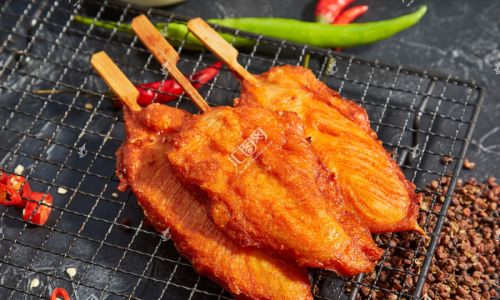
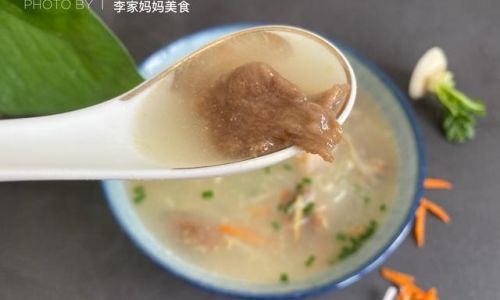

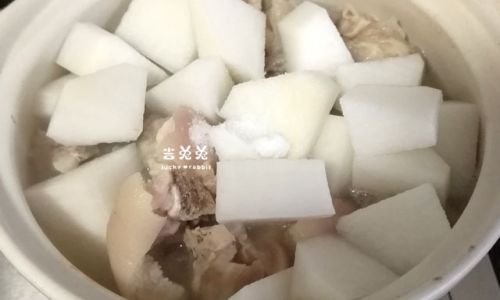
0 comments